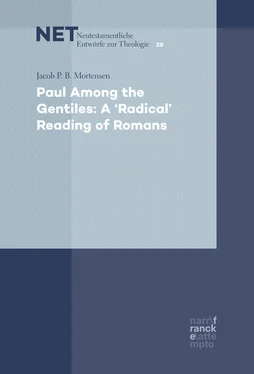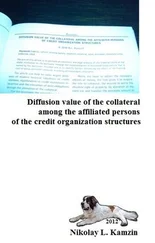Nanos’s interpretation presents a Paul who worked within Jewish communities as a law-observant Jew. Paul addressed his message to Gentiles, because of his commission to the Gentiles as apostle, because of God’s work through Christ. But Nanos holds that Paul did not break with the basic conceptions that characterized Judaism in the first century CE. Paul neither created a new religion nor became a law-free apostle. On the contrary, Paul firmly believed that the (Mosaic) law represents God’s gift to Israel, and that a Jew observes the law as a response to God’s mercy. Thus, Nanos’s thinking clearly converges with Sanders’ interpretation and presentation of ‘covenantal nomism’. Nanos also presents such a Jewish Paul that he rejects a ‘two covenant’ solution. Because Paul was so Jewish, and because Paul believed that Christ was the awaited Jewish Messiah, Jews and Gentiles come together in the Jewish salvation through the Messiah. However, Jews remain within the covenant relationship with God, which the Messiah comes to reaffirm. Gentiles do not become Jews, and they do not become part of Israel’s covenant, but they are still saved because of the Jewish Messiah. Hence, Mark Nanos’s interpretation presents a Paul who is thoroughly Jewish, and there is no sign in it of Christianity.
Paula Fredriksen is primarily known for two things in her scholarly work: her work on the problem of the historical Jesus,2 and her work on Augustine.3 In her work on Augustine, she has given voice to a ‘softer’ and more ‘enlightened’ version of Augustine’s relationship to the Jews.4 According to Fredriksen, Augustine was not anti-Judaistic,5 but should be positioned cautiously within a proper and nuanced discussion between Christian theologians of the church, and his Manichean opponents. In her work on the historical Jesus, Fredriksen worked to contextualize Jesus in Second Temple Judaism as an apocalyptic prophet,6 instead of framing him as a Christian saviour. In one of her articles, she states: ‘Jesus was a Jew of his time rather than a left-leaning liberal of ours’.7
In Fredriksen’s work on both the historical Jesus and on Augustine, she has focused specifically on anti-Jewish elements and how to avoid those in contemporary scholarship.8 Even though the main aspect of her research does not concern Paul, Fredriksen has managed to calibrate her scholarly work about Jesus and Augustine to the field of Pauline studies, since it also concerns early or formative Christianity. The consequence of this is that the positions expressed in her work on the historical Jesus and Augustine also becomes valid in relation to ‘Paul the Jew’. Paul was and remained a Jew. He did not ‘create’ a new religion (Christianity), and he did not criticize Judaism from a position ‘outside’ Judaism. In her article ‘Judaism, The Circumcision of Gentiles, and Apocalyptic Hope: Another Look at Galatians 1 and 2’, Fredriksen considers the Galatian controversy in the history of Pauline interpretation:
Paul’s position in this controversy – that salvation in Christ is through ‘grace’ and not through ‘the works of the law’ – has served for centuries as the fundamental statement of the difference between Christianity and Judaism. … Our [theological] interpretive context for Galatians is the birth of Christianity; theirs [Paul and his Jewish co-workers] was scriptural – that is Jewish – hopes and expectations in the face of the approaching End of Days.
Fredriksen’s intent is to work more historically than theologically: She wants to determine what Judaism was at the time of Jesus and Paul, so that she can understand Jesus and Paul from their background in Second Temple Judaism.
One of the advantages of Fredriksen’s work for the radical perspective is her focus on the eschatological situation of Paul and his congregations. By drawing on the idiom of Jewish restoration theology concerning the return from Babylon and the experience of redemption from sin, evil, and exile, Fredriksen establishes a plausible social and religious context for Paul’s mission and work. The Jews at the time of Paul who participated in this restoration movement were expecting the twelve tribes to be restored, the people to be gathered back to the Land, the Temple and Jerusalem to be restored and made splendid, the Davidic monarchy to be restored, and God’s kingdom to be established.9 And in this splendid restoration, Fredriksen identifies a certain part to be played by the Gentiles. For one thing, the Gentile nations will be destroyed, defeated, or in some way subjugated to Israel. But another stream within the restoration thinking concerns the eschatological inclusion of Gentiles. Within this stream of restoration theology, the Gentiles participate in Israel’s redemption. They stream to Jerusalem and worship the God of Jacob together with Israel (cf. Isa 2:2–4; Mic 4:1ff.). On God’s mountain, the Gentiles will eat together with Israel (Isa 25:6), and as the Jews leave the lands of their dispersion, Gentiles will accompany them (Zech 8:23). According to Fredriksen, it is crucial that these Gentiles remain Gentiles and do not undergo conversion and circumcision. They are to be saved as Gentiles, and do not, eschatologically, become Jews. These Gentiles, then, were the ones to whom Paul addressed his gospel, and who made up his eschatological congregations.
Runar Thorsteinsson is an Icelandic scholar who earned his PhD in Sweden in 2003, and subsequently did scholarly work in Lund, Linköping, and Copenhagen. Thorsteinsson does not explicitly associate himself with the radical perspective. However, his contribution to the study of Romans reaches beyond his main thesis and central topic, Paul’s interlocutor in Romans 2. In many ways, Thorsteinsson’s book is a narrow study of a minor part of Romans. Nevertheless, Thorsteinsson manages to contextualize Paul’s letter within ancient epistolography, and draw valuable parallels, especially to Cicero and Seneca.1 In extension of the contextualization of Romans in ancient epistolography, Thorsteinsson focuses meticulously on the implied audience (as differentiated from the real audience) of Romans as Gentile. Thorsteinsson has no doubts that Paul envisaged the implied audience as Gentile, whether or not there were actually any Jews in the ‘real’ Roman congregation.
The main thrust of Thorsteinsson’s argument revolves around the interpretation of Paul’s statement in 2:17: ‘But if you call yourself a Jew’ (Εἰ δὲ σὺ Ἰουδαῖος ἐπονομάζῃ). Thorsteinsson convincingly bridges between the identity of the interlocutor in 2:1 and the stereotypical description of Gentiles in 1:18–32 by way of his discussion of Διὸ. But the major point he intends to prove is that the identity of the interlocutor remains the same from 1:18 to 2:16, and then further on, in 2:17ff. He convincingly proves the progressive unity of 2:1–16 as addressed to a Gentile, and the next step concerns the move to 2:17ff., where the identity of the interlocutor must be attached to a Gentile who wants to, or has, converted to Judaism (a God-fearer or a proselyte). The possibility of this reading comes down to the interpretation of the expression ‘if you call yourself a Jew’, and the meaning of the verb ἐπονομάζῃ (2:17). There is plenty of evidence for taking the verb to mean falsely calling oneself something which one is not. Thus, the deciding factor for or against this interpretation of the identity of the interlocutor as a Jew or a Gentile must rest upon his characterization in the remaining discourse of Romans. Thorsteinsson provides a few pointers in this direction, but merely as an outlook or perspective. In a review of Thorsteinsson’s book, Stanley Stowers concludes with these words: ‘I admit that 2:17 is ambiguous and there is an argument that should be entertained for a Gentile who wants to be a Jew’.2
Читать дальше












